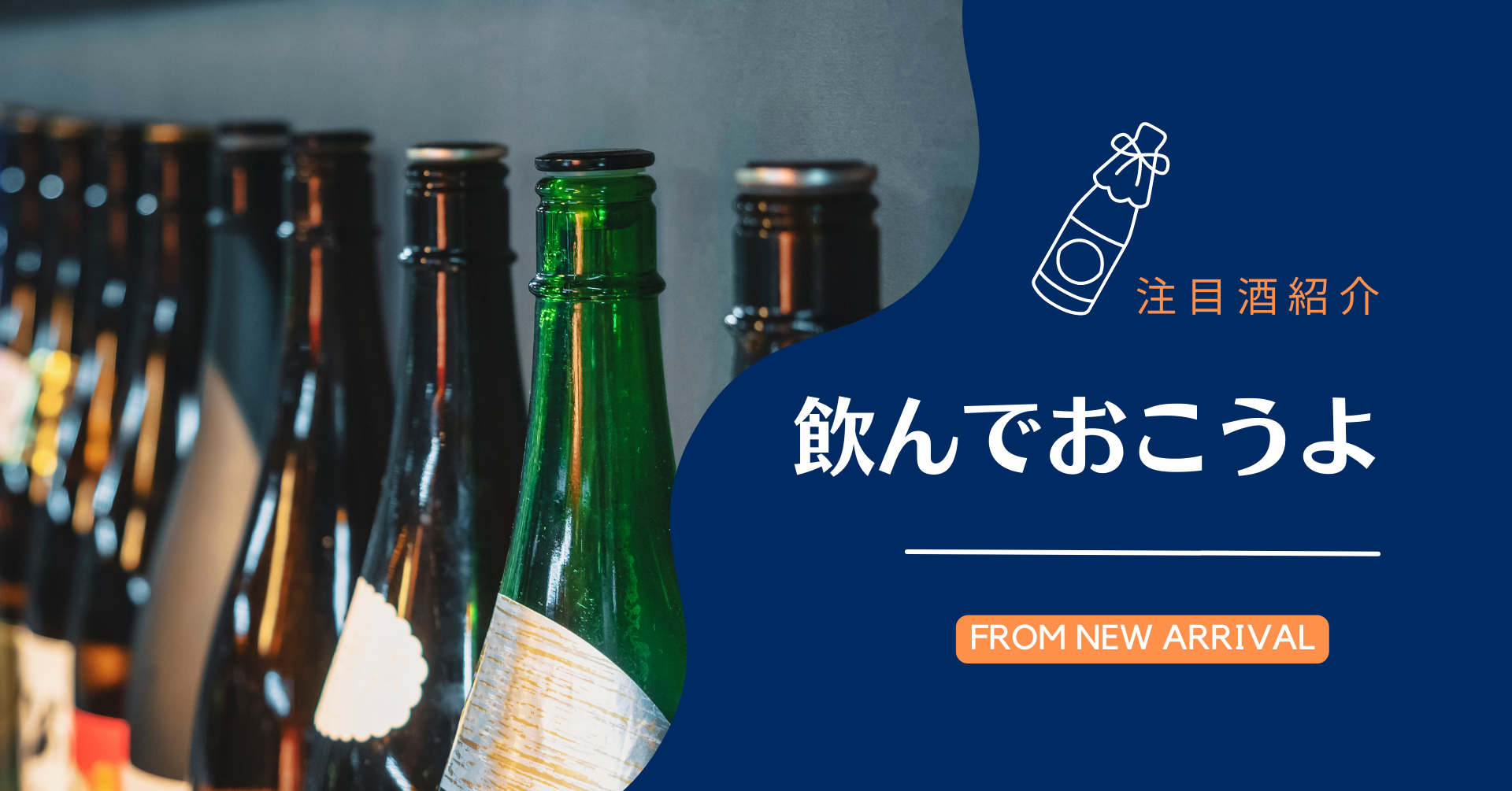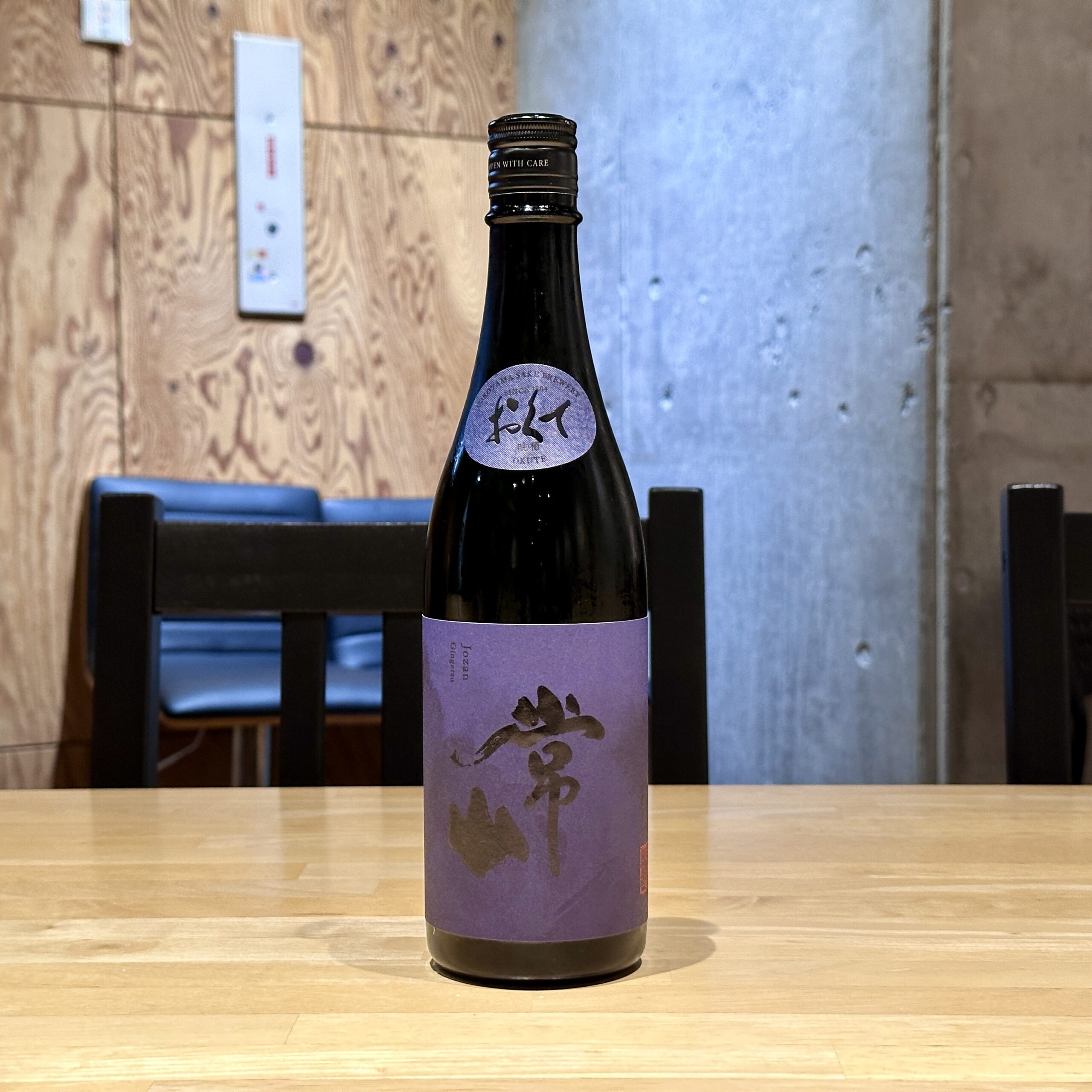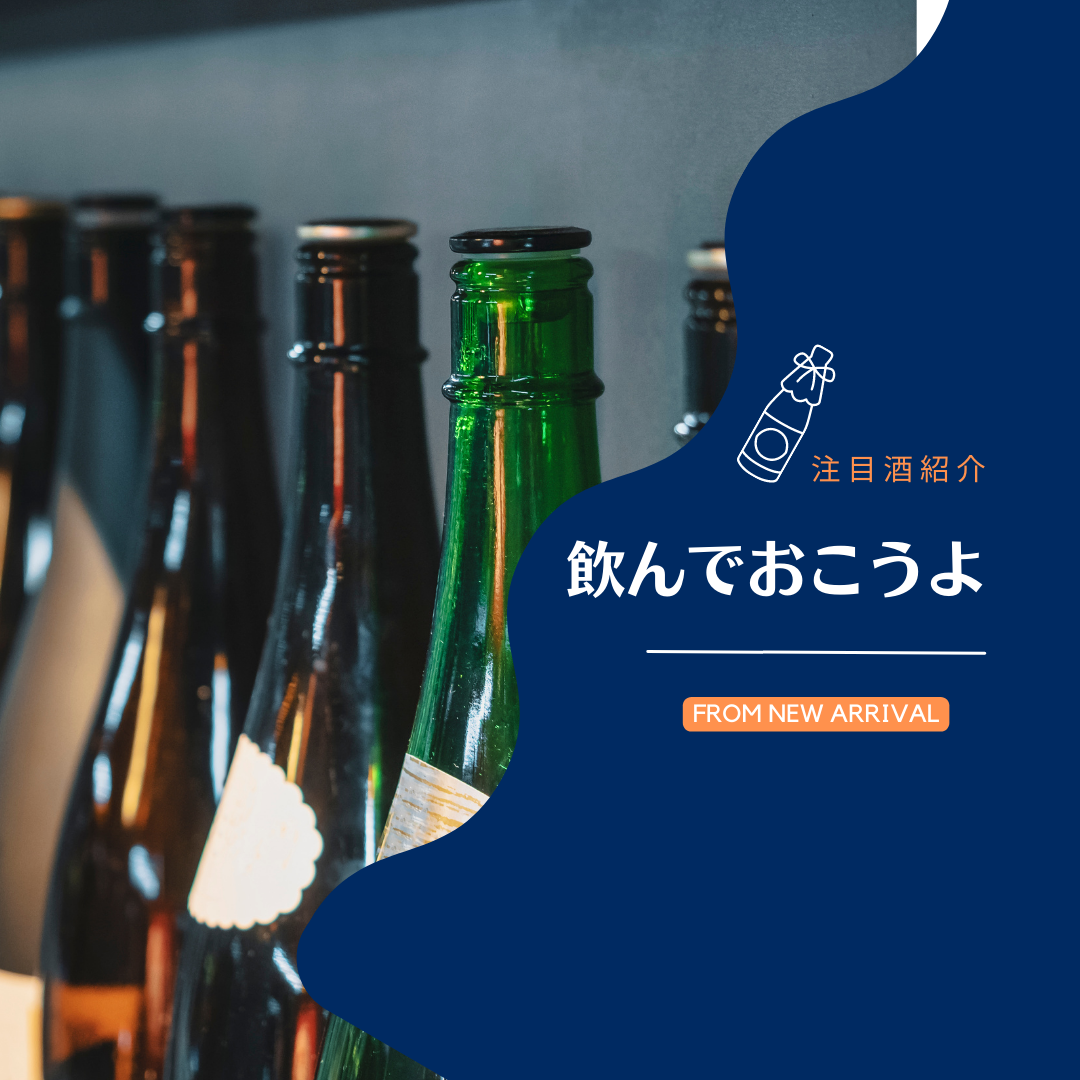
日本酒は一期一会です。季節に合わせてさまざまな日本酒が入荷して、飲まれて、消えて行きます。飲む機会をなくしたとき、来年まで待っていただくことになります。ここでは店主が召し上がっていただきたいと思う日本酒をご紹介しています。
Sake is a once-in-a-lifetime opportunity. Various kinds of sake arrive according to the season, are drunk, and disappear. When you lose the chance to drink, you will have to wait until next year. Here, we introduce sake that the owner would like you to try.
新たな秋酒の考え方「常山 吟月 おくて」

ここ数日、暑さも和らいで、秋が近づいてきたことが判るような気候になっていますね。冷酒でも、燗酒でもかかってこいやぁ~って感じの、おいしい酒倶楽部の今井です。
・
最近、「生詰」という言葉が分かりづらいということで、ボトルのラベルや裏書きで「一回火入れ」という言葉に置き換わっています。それでも分かりづらさはあまり変わっていない気がします。
・
茶道にはお作法があります。日本酒の世界も「酒道」を設ければ良いと思うのですが、売りたいが前面に出ると「お作法」は消えて行きます。あなたはどうお考えでしょう?
・
そこで今回取り上げた常山酒造が醸す「常山」は、その飲み心地から「わせ」と「おくて」という言葉を使ってきました。その「おくて」がこのお酒。
・
漢字で書くと「晩稲」と書き、「おしね」とも「ばんとう」とも読みます。
・
そこで、当然ながら、晩稲があるのだから、早稲(わせ)もある訳です。だから、季節に合わせて、わせ:早稲品種:みずみずしさと軽やかさを備えた、爽快な味わい
おくて:晩稲品種:豊潤なふくらみで魅せる余韻
と味わいで切り分けました。
・
そもそもひやおろしとは何か、秋あがりとは何か。酒道の世界があれば判らなくとも「高貴なもの」として伝わっただろうと考えています。が、それが違った。だから、迷走することになったのだとも。
・
味わい深さをどう切り分けるか難しい世界に挑んだ常山酒造ですが、楽しみが広がりました。あなたもこの考え方を理解していただき、応援していただければと思います。乾杯![2025.09.23]
・
最近、「生詰」という言葉が分かりづらいということで、ボトルのラベルや裏書きで「一回火入れ」という言葉に置き換わっています。それでも分かりづらさはあまり変わっていない気がします。
・
茶道にはお作法があります。日本酒の世界も「酒道」を設ければ良いと思うのですが、売りたいが前面に出ると「お作法」は消えて行きます。あなたはどうお考えでしょう?
・
そこで今回取り上げた常山酒造が醸す「常山」は、その飲み心地から「わせ」と「おくて」という言葉を使ってきました。その「おくて」がこのお酒。
・
漢字で書くと「晩稲」と書き、「おしね」とも「ばんとう」とも読みます。
・
そこで、当然ながら、晩稲があるのだから、早稲(わせ)もある訳です。だから、季節に合わせて、わせ:早稲品種:みずみずしさと軽やかさを備えた、爽快な味わい
おくて:晩稲品種:豊潤なふくらみで魅せる余韻
と味わいで切り分けました。
・
そもそもひやおろしとは何か、秋あがりとは何か。酒道の世界があれば判らなくとも「高貴なもの」として伝わっただろうと考えています。が、それが違った。だから、迷走することになったのだとも。
・
味わい深さをどう切り分けるか難しい世界に挑んだ常山酒造ですが、楽しみが広がりました。あなたもこの考え方を理解していただき、応援していただければと思います。乾杯![2025.09.23]
常山酒造(福井県福井市)
[Jozan Gingetsu Okute]
The heat has eased over the past few days, and the weather is starting to show that autumn is on its way. Bring it on, whether you’re drinking chilled or warmed sake! This is Imai from the Oishii Sake Club.
・
Recently, the term “namazume” (raw sake) has been replaced with “ikkaihiire” (one-time pasteurization) on bottle labels and backs, as it’s been difficult to understand. Even so, it still doesn’t seem to be that difficult to understand.
・
There are etiquettes in the tea ceremony. I think the world of sake should also have its own “shudo” (way of sake), but when sales become the main focus, etiquette tends to disappear. What do you think?
・
So, in this article, we’ll be looking at “Jozan,” brewed by Tokoyama Sake Brewery, and the words “wase”(early) and “okute”(late) have been used to describe its drinking experience. This sake is an example of that “okute.”
・
Written in kanji, it’s “晩稲” (late rice) and can be pronounced either “oshine” or “bantou.”
・
So, naturally, since there’s late rice, there’s also early rice. So, according to the season, we divided them into flavors:
Wase early rice varieties: fresh and light, with a refreshing taste
Late late rice varieties: rich, full-bodied, with a captivating aftertaste.
・
First of all, what are hiyaoroshi and akiagari? I believe that if the world of sake-drinking had been around, they would have been conveyed as “noble” even if they didn’t understand. But that wasn’t the case. That’s why we ended up going astray.
・
Tokoyama Sake Brewery took on the difficult world of distinguishing between flavorful varieties, and the joy has expanded. We hope you will understand this philosophy and support us. Cheers![2025.09.23]
The heat has eased over the past few days, and the weather is starting to show that autumn is on its way. Bring it on, whether you’re drinking chilled or warmed sake! This is Imai from the Oishii Sake Club.
・
Recently, the term “namazume” (raw sake) has been replaced with “ikkaihiire” (one-time pasteurization) on bottle labels and backs, as it’s been difficult to understand. Even so, it still doesn’t seem to be that difficult to understand.
・
There are etiquettes in the tea ceremony. I think the world of sake should also have its own “shudo” (way of sake), but when sales become the main focus, etiquette tends to disappear. What do you think?
・
So, in this article, we’ll be looking at “Jozan,” brewed by Tokoyama Sake Brewery, and the words “wase”(early) and “okute”(late) have been used to describe its drinking experience. This sake is an example of that “okute.”
・
Written in kanji, it’s “晩稲” (late rice) and can be pronounced either “oshine” or “bantou.”
・
So, naturally, since there’s late rice, there’s also early rice. So, according to the season, we divided them into flavors:
Wase early rice varieties: fresh and light, with a refreshing taste
Late late rice varieties: rich, full-bodied, with a captivating aftertaste.
・
First of all, what are hiyaoroshi and akiagari? I believe that if the world of sake-drinking had been around, they would have been conveyed as “noble” even if they didn’t understand. But that wasn’t the case. That’s why we ended up going astray.
・
Tokoyama Sake Brewery took on the difficult world of distinguishing between flavorful varieties, and the joy has expanded. We hope you will understand this philosophy and support us. Cheers![2025.09.23]
#おいしい酒倶楽部 #常山酒造 #常山 #吟月 #秋酒 #おくて #福井酒 #Delicious_Sake_Club #tokoyama_brewery #jozan #gingetsu #autumn_sake #fukui_sake


